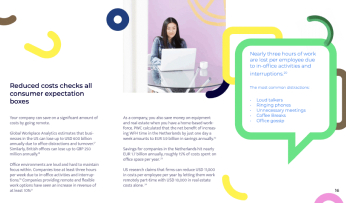A recent Microsoft survey threw some light on how the Gen Z workforce in particular (ages 18-25) is struggling to manage their remote work. Almost 60% are likely to quit their jobs in 2022. The core reasons cited: isolation, lack of motivation, and inadequate resources for WFH arrangements.
And these days, there’s no dragging a foosball table into the common area to boost employee morale.
Most of us value the same things in our careers as we do in our lives. Feeling like we belong. Having a sense of purpose. Experiencing security, comfort, and happiness.
Failure to satisfy these needs could leave your company on the losing side of the war for talent. Having skilled workers leave time and again is costly and disruptive, as is recruiting fresh talent.
How do you get them to stay?
Employees who feel like they belong are far more likely to be loyal to your organisation. To retain your remote workers, you’ll need a company culture that engages them.
And the bonus? Happiness increases workplace productivity.
So, what now? Make employee happiness the outcome and not the goal of your retention strategy.
1. Be flexible
No, we aren’t talking about making your team do the downward dog every morning.
When you recruit a remote workforce, focus on what people deliver and not the hours they’ve worked. There’s no point running operations like a traditional 9 to 5 when you aren’t one.
Let them choose when they prefer to work. You’ve hired agents in different time zones, why not also allow different work-hour preferences?
Exercise this freedom generously. The danger of digital exhaustion puts workers at a higher risk of burnout. Also, consider how to ease workloads. If someone prefers a 4 day week, or a 5 hour day, make it happen.
Studies show that people working between 21 and 30 hours a week report maximum happiness and sense of purpose at work. While misery can increase with the hours added thereafter. You don’t need a calculator to see that real work-life balance isn’t 5 days of work versus 2 days off.
When you’re flexible, you can create a better future for remote work. One that both you and your employees will benefit from.
2. Be inclusive
The fun part about going to work is being able to laugh some stress off, have lunch with your co-workers, and share office gossip. It’s hard to replicate this in a remote setup.
Working from home can leave people feeling disconnected from their colleagues and workplace.
Plan some time out every day for an informal team chat so team members can bond and feel included. Making time for play is healthy for our well-being. After all, almost 70% of millennials say chatting with co-workers matters a lot to them.
Encourage everyone to say something about their day so the quiet ones don’t get left out of the call. People, however shy, like to feel included and crave more in-person time with their teams. You can also schedule video calls, they’re more effective in helping remote workers connect.
3. Be supportive
Though WFH is liberating, for those who live alone it can also be isolating and lonely. Without hallway conversations, small-talk coffee, and casual encounters, many remote workers feel shunned and left out.
This study is even more relevant today. Pandemic-driven anxiety and stress are taking a toll on our well-being. You don’t want your people going all Mugatu when you can prevent it.
Make mental health support a part of your engagement culture. Create initiatives where team members can share their stressors and what they do to cope. Or go a step further and take out a corporate subscription for mindfulness apps to boost resilience.
For instance, Ericsson in North America made Headspace available for free to its employees and spouses.
4. Be humane
Remote work has increased the time people spend using online tools dramatically. Yet, for many companies, productivity expectations remain the same or even higher. What’s more, it leads to an exhausted workforce on the verge of burnout.
In a Gartner study, nearly half the remote workforce surveyed say their average workday increased in the last year. People don’t know how to switch off anymore which causes even more fatigue.
Microsoft’s 2021 global work survey found respondents feeling overworked (54%) exhausted (39%) and struggling to find a good work-life balance due to employer apathy (20%).
Empathise with your people tackling the new challenges remote work brings. Increased online meetings, email threads, and documentation trails can cause digital fatigue. Set realistic goals instead of tiring your team with unrealistic ones that ignore the reality of their lives.
5. Be prepared
Remote work can make information much harder to access since people can’t walk up to co-workers for confirmation or clarity. You can tackle this by creating an updated and detailed information system with all your standard operating procedures (SOP) in one place.
Searching for customer info could win an award for ‘least productive process’. Focus on integrating all user data into a unified interface to help your support team do their work.
Finally, help your employees in creating dedicated spaces for working from home. Whether it’s providing for headsets, ergonomic chairs, or even wrist guards to prevent carpal tunnel syndrome.
You can prepare your people for the new challenge of remote work at every step. All your workers need during difficult times is a company culture they can lean on.










